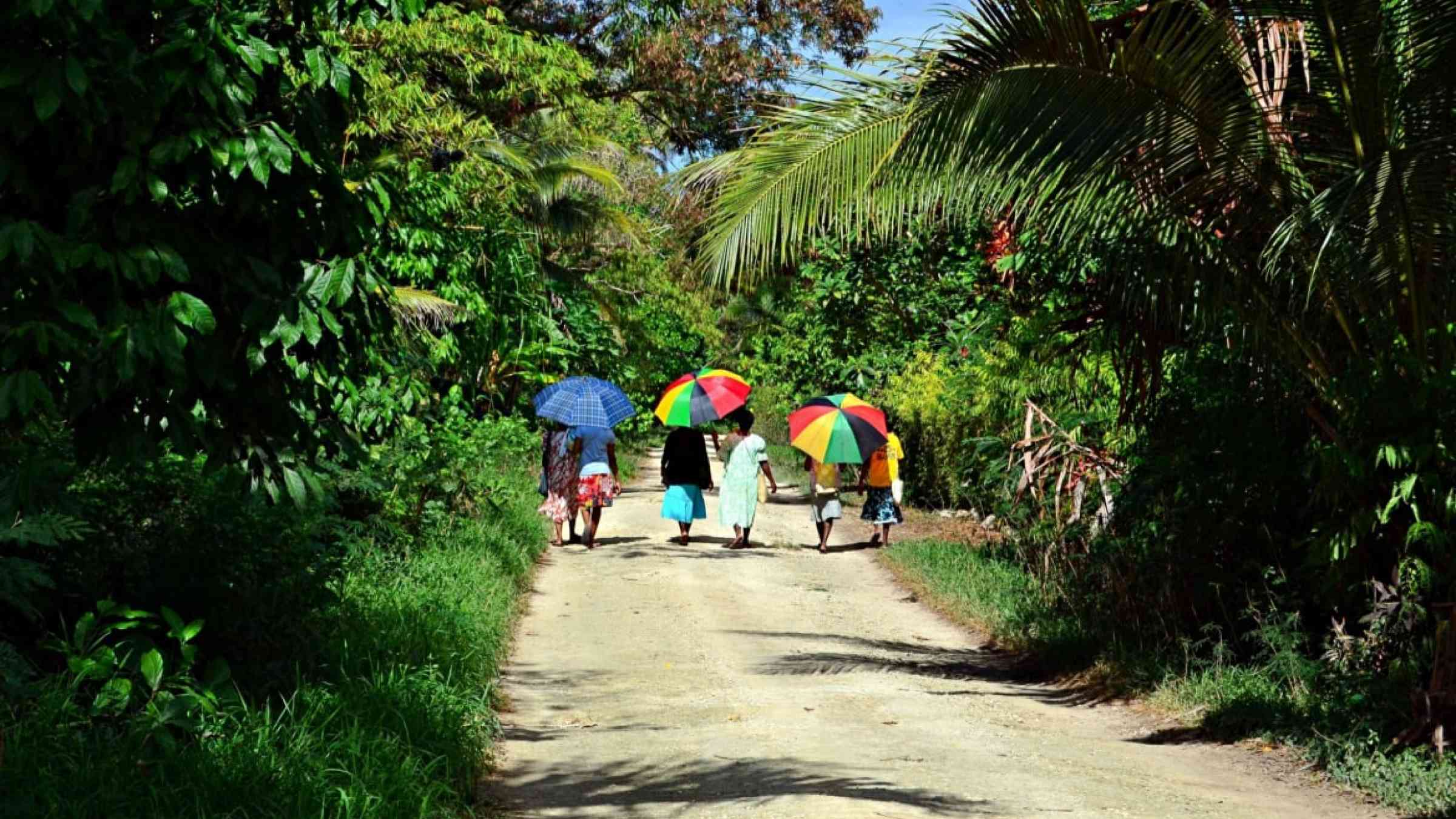New Sarakata river flood management plan to safeguard lives and livelihoods

Most of the time, the Sarakata River in Espiritu Santo is a serene and beautiful waterway. After heavy rainfall, however, it surges into a raging torrent, flooding nearby areas.
Although such floods are a natural phenomenon, human-induced climate change is making such rainfall events more extreme. In turn, this extreme rainfall is making flooding in the Sarakata River catchment more destructive, leaving communities in the vicinity more vulnerable in terms of their physical safety, economic stability, and overall development.
To address this challenge, a comprehensive flood management plan and early warning system has been developed by the Vanuatu Klaemet Infomesen blong Redi, Adapt mo Protekt Project (VanKIRAP) to help communities close to the river like Solway, Pepsi, and Pump Station to prepare, plan for and respond to climate-induced flood events.
This is a Vanuatu priority enshrined in the Vanuatu National Water Strategy (VNWS) 2008-2018, National Sustainable Development Plan (ENV3.3, ENV3.4 and ENV3.5) and Key Outcome 6 under the Vanuatu Meteorology Strategic Development Plan (VMGD SDP).
A well-designed flood management plan serves as a road map for assessing and mitigating the risks associated with Sarakata River’s unpredictable flooding events. It also helps minimise the impacts of flooding by efficiently managing floodwaters, reducing property damage, safeguarding public health, and ensuring the continued functioning of critical infrastructure.
Following a previous consultation with Port Vila-based stakeholders in June 2023, a workshop was held in Luganville to gather feedback from various Government agencies on the draft Sarakata Catchment Flood Management Plan. Representatives from the Sanma Provincial Government, Luganville Municipal Council, National Disaster Management Office, Department of Water Resources, Department of Lands, Ministry of Health, Vanuatu Meteorology and Geo-hazards Department, SPREP and the Vanuatu Broadcasting Television Corporation (VBTC) participated in the consultation. The Plan details actions and standard operating procedures that national, provincial, and local governments need to implement in order to protect communities within the Sarakata River catchment area. VanKIRAP has engaged the firm - Tonkin and Taylor to develop the plan and facilitated this stakeholder workshop.
The workshop covered a range of topics including flood risk management governance and planning; flood risk management measures; hydrological observation, monitoring, analysis, and forecasting; warning dissemination and communication; preparedness, and response capabilities. Discussions were also held on to determine flood response standard operating procedures, including a simulation exercise that involved all participants of the training.
According to the workshop’s facilitator, Dr. Neeraj Shankar from Tonkin & Taylor, the main goal of the workshop was to present the flood management plan and early warning system for the Sarakata River catchment.
“We also conducted flood simulation exercises to evaluate how authorities would respond during flood events, and identified the key challenges they face when implementing key decisions”, Mr. Shankar said. “The plan is of utmost importance as it is the first for the Sarakata River catchment, helping authorities establish procedures to reduce vulnerability and ensure the safety of communities during rainfall events or when water levels rise”.
Standard operating procedures (SOPs) also play a key role in enhancing the efficiency and coordination among all stakeholders involved in flood management, including government agencies, local communities, and NGOs. SOPs provide clear guidelines for response actions during flood emergencies, delineating roles, responsibilities, and steps to be undertaken by each party involved. This alignment ensures a well-coordinated response that reduces confusion, maximises the utilisation of available resources, ensures effective communication and expedite response to affected communities.
“The Flood Management Plan and Early Warning System we have developed for the Sarakata, Luganville catchment draws on best practice relating to early warning systems and flood risk management” said Sunny Kamuta Seuseu, VanKIRAP Acting Manager.
“Early warning system elements align with the World Meteorological Organization’s “Early Warning for All” initiative as well as the WMO multi-hazard early warning framework and people-centric early warning guidelines”, added Seuseu.
“Flood management activities on the other hand, are developed with reference the benchmarks outlined in the Urban Floods Community of Practice (UFCOP) Urban Risk Management in the Pacific 2017” he said.
The workshop was coordinated by the Secretariat of the Pacific Regional Environment Programme (SPREP) together with the Vanuatu Government through the VanKIRAP project.
The Vanuatu Klaemet Infomesen blong Redy, Adapt mo Protekt (VanKIRAP) Project supports climate-resilient development in Vanuatu by equipping decision-makers, communities, and individuals in Vanuatu with the climate information services (CIS) they need to respond to climate variability and change. Target audiences are Vanuatu’s agriculture, fisheries, tourism, infrastructure and water sectors, and the public. The Project is housed at VMGD, and jointly managed by VMGD and the Secretariat of the Pacific Regional Environment Programme (SPREP) with funding from the Green Climate Fund.